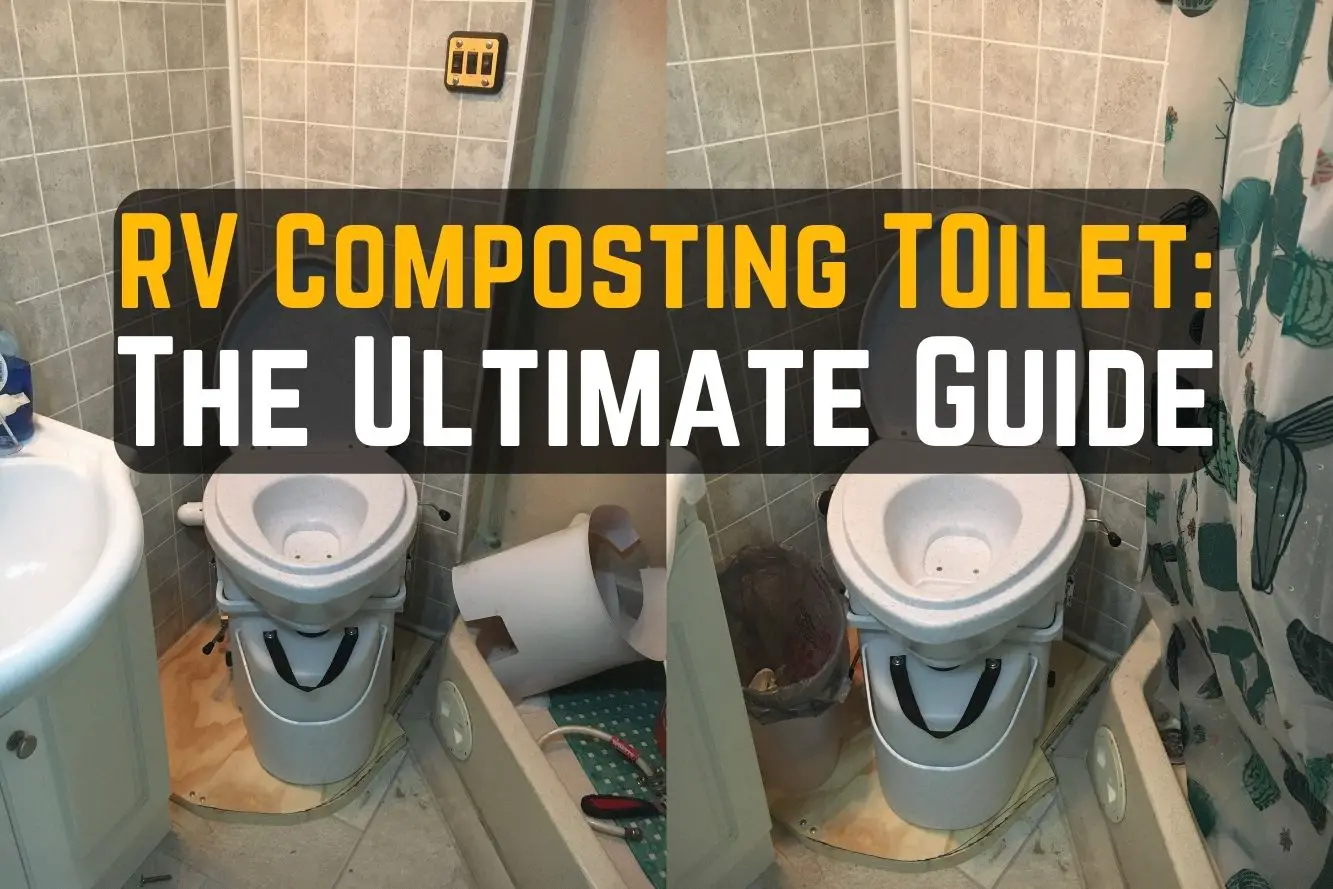In this ultimate RV composting toilet guide, you’ll learn everything you ever wanted to know about compostable toilets for RVs. And then some!
Are these waterless RV toilets worth it or is it all hype? We’re covering:
- How RV composting toilets work.
- Pros and cons of composting toilets for RVs.
- How easy is it to replace your RV toilet with a composting toilet?
- Top 5 composting toilets on the market today
And much more. Let’s dive in.
This post contains affiliate links. This means if you make a purchase from a link on our website, we may earn a small commission at no extra cost to you. Thanks for supporting RVHQ!
Table of Contents
What is an RV Composting Toilet?
An RV composting toilet is a type of waterless toilet that separates solid waste (poop) and liquid waste (pee) into two different compartments. By separating solids and liquids, the waste never turns into sewage. Instead, the solid waste composts into a natural organic material, and you can dump the liquid in a toilet, drain, or even on the ground in certain places.
The only things an RV composting toilet needs to work is a small amount of electricity and a composting medium. That’s just a fancy way of saying soil or shredded coconut husks to use in the solid waste bin.
How RV Composting Toilets Work
An RV composting toilet has a seat and a bowl like a regular toilet, but that’s where the similarities end. This RV toilet works differently than a standard RV toilet – for example, it’s totally waterless.
The bowl of the toilet is angled and has a urine diverter to divert all liquids into the liquids jug and keep them separated from the solids bin. This jug is typically located in the front of the toilet.
The compost (or solids) compartment is a large compartment directly beneath the bowl of the toilet. There is a flap in the toilet bowl that you can open with a handle or a switch, depending on the toilet model, to drop solids into the bin.
The compost compartment has an agitator connected to a handle on the outside of the toilet. After depositing solid waste, you just crank the handle 2-3 times to mix the compost with the waste. This helps break it down faster.
Most composting toilets have an intake and exhaust fan in the composting compartment. It’s typically a small 12v computer fan that draws hardly any power and is vented outside the RV. This helps bring fresh air into the compost bin to help dry the waste out and speed up the composting process.
Composting Toilet for RV Pros and Cons
There are pros and cons to any RV toilet type. In our opinion, the pros of RV compostable toilets outweigh the cons. However, we want to provide as unbiased of a guide as possible, because not everyone likes the same things.
Pros:
Never Dump Sewage Again
With a compostable RV toilet you will never have to dump raw sewage again. When poop and urine mix it creates raw sewage – a noxious biohazard that smells and is dangerous for your health and the environment.
But if they never mix, the reaction that causes raw sewage never happens.
What you’re left with is an almost odorless compost material that looks like moist soil, and a jug of urine that you can dump in a regular toilet, most drains, or around mature vegetation on the ground.
And the best part? You’ll never have to deal with dumping your black tank again. You’ll never have to worry about black tank clogs, the dreaded RV poop pyramid, or any of that nasty stuff!
Convert Black Tank to Extra Gray Water Storage
A composting toilet is self-contained, so if you install one in your RV, you won’t be using your black tank anymore.
If you love boondocking or camping at state parks without full hookups, you could definitely use more gray water storage!
Converting your RV black tank into additional gray water storage is super simple – you don’t even have to make any alterations to your RV.
All you need to do is get a twist-on waste gate valve and attach it to your RV sewer hose connection as a permanent add-on.
Once your gray tank is full, you can transfer some of the water to your black tank. Here’s how:
- Keep the twist-on waste gate valve closed.
- Open the black tank valve.
- Then, open the gray tank valve.
- The wastewater will flow up the pipe into the black tank until the tanks are even.
- Close the valves.
- Now you have more room in your gray tank!
If you plan to do this, you might want to learn how to remove dried poop and waste from your RV black tank first.
Environmentally Friendly
The waste from a composting toilet is environmentally friendly. As we said earlier, raw sewage is a biohazard.
It’s not only dangerous for humans, sewage is a huge problem for the environment.
Although compost is not free of bacteria – it literally relies on bacteria to break down the waste – it is not as dangerous as raw sewage.
Nor is it as harmful to the environment. In fact, one of the most popular uses for compost is as a soil fertilizer.
Note: it is not recommended to use compost made from human waste to grow plants (vegetables, fruit, herbs, etc) for human consumption.
Boondock Longer
If you have a composting toilet in your RV, you can boondock for longer periods of time.
A composting toilet doesn’t use any fresh water, so your freshwater reserves will last much longer.
In addition, not needing to use your black tank allows you to convert it into extra gray water storage. And of course, this enables you to stay off-grid for longer periods of time.
No Odors
There are virtually no odors from a composting toilet. When you dump the liquids, you will smell urine. But when you dump the solids bin, the only aroma you will smell is that of moist soil.
Editor’s Note
We used a composting toilet for 3 years in our RV and later used a different one in our camper van. We can confirm that there are no odors from the composting toilet other than that of moist soil from the solids bin and a urine odor when dumping the liquids jug.
Cons:
Learning Curve
When you first get a composting toilet in your RV, there can be a pretty steep learning curve.
Using and operating a composting toilet is very different from a regular toilet. Everything is different – right down to the toilet seat on some models.
Emptying Liquids Frequently
Although you don’t have to empty the solid waste very often – every 2 to 3 weeks depending on use – you do need to empty the liquids jug every couple of days.
Depending on the size of your liquids container, you may have to empty it more frequently.
The frequency can be annoying, especially when it’s the middle of the night and you have to pee really bad but the jug is full!
However, many composting toilet brands give you the option to purchase an extra liquids container for those middle-of-the-night emergencies.
Getting Up Close and Personal
As RVers, we are used to having to think about and deal with our own bodily waste. Unlike people in sticks-and-bricks who never have to worry about it after they flush it, talking about and dealing with our own waste is normal – and it’s a normal topic of conversation for many of us.
But if you have a composting toilet, you will be getting really up close and personal with your own waste – and that of your family. Opening up the toilet to empty the solids bin puts you right in the middle of the action!
It’s important to note that when you open the solids container, it doesn’t look like poop at all. It looks like moist soil and smells like damp earth. There are no solid turds or anything that resembles poop, but you still have the knowing that that’s what it is.
Doesn’t Feel Residential
Lastly, a composting toilet just doesn’t feel residential. There’s nothing about it that feels like the toilets you may be used to.
If you’re the type of RVer that wants everything in your RV to feel just like being in a sticks-and-bricks home, a composting toilet is probably not the best choice for you.
Main Benefits of Using a Compostable Toilet for an RV
To summarize – there are a lot of benefits of using a compostable toilet for an RV. But there are some disadvantages that make it a dealbreaker for some people.
The main benefits:
- Eliminate the need for your black tank.
- The ability to use your black tank as extra gray water storage.
- Does not use any water.
- Environmentally friendly.
- No odor.
How To Replace Your RV Toilet With a Composting Toilet
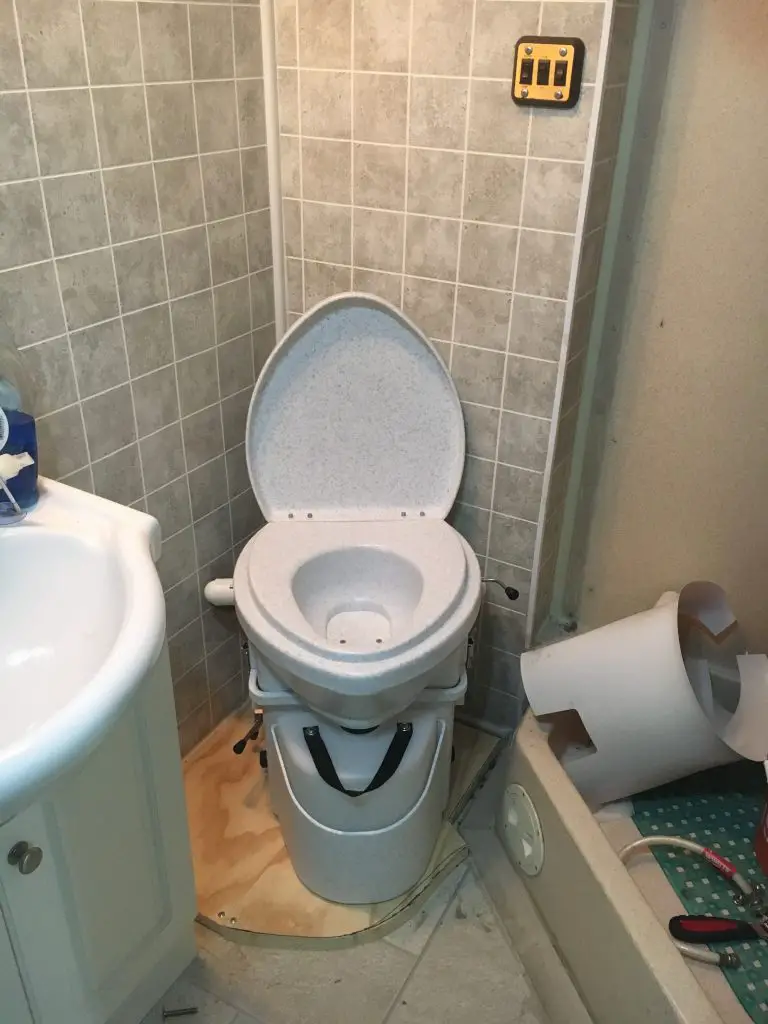
Replacing your standard RV toilet with a composting toilet is a fairly straightforward process.
There are 2 main things you need to consider:
- A 12v power source.
- Venting the toilet to the outside.
You can hardwire the toilet into your RV 12v DC system, or you can use a plug.
As far as venting goes, we’ve seen a lot of creative ideas. Some RVers even run the venting hose up to their bathroom ceiling vent to avoid having to drill holes in the RV. Others create a small hole to vent the toilet to the undercarriage – it’s really up to you.
Editor’s Note
We replaced our standard RV toilet with a Nature’s Head RV toilet. The overview of steps below is the exact process we followed.
Here’s a quick overview of how to replace your RV toilet with a composting toilet.
- Shut off the water to your RV toilet.
- Remove your RV toilet from the floor and cap off the water pipe on the wall.
- Sanitize the area.
- Use a flange cover to close off the pipe in the floor that goes to the black tank.
- If necessary, use plywood to create a platform for your new toilet so that it sits flush and level over the flange cover. You can see a makeshift plywood platform in the photo above. If we did it again, we’d cut the platform to the shape of the toilet instead.
- Decide where to vent your RV toilet and make the necessary alterations.
- Run a wire from a 12v power source or decide where to plug in your RV toilet.
- Install your toilet brackets and toilet.
- Hook up the vent hose.
- Hook up the power.
How to Use a Composting Toilet in an RV
While there is a pretty big learning curve for using a compostable toilet in an RV, it’s pretty simple once you get the hang of it.
For going pee:
Going pee in a composting toilet is pretty simple. People of all genders should sit to pee on a composting toilet. This is because the front of the toilet is where the urine diverter is located, and if you stand to pee, it may not work properly.
Simply sit on the toilet and pee. No need to move the flap, flush, or do anything else. After you pee, spray down the area with a water and vinegar solution. This helps keep the bowl clean and odor free.
For going poop:
This process may be different depending on the toilet model. Here’s the process for going #2 in a Nature’s Head.
- Open the toilet flap.
- Do your business.
- Close the flap.
- Turn the handle 3 times.
And that’s all!
Top 5 Compostable Toilets for RVs
There are a lot of options on the market – so how do you choose?! We’ve narrowed it down to 5 of the top options.
Nature’s Head
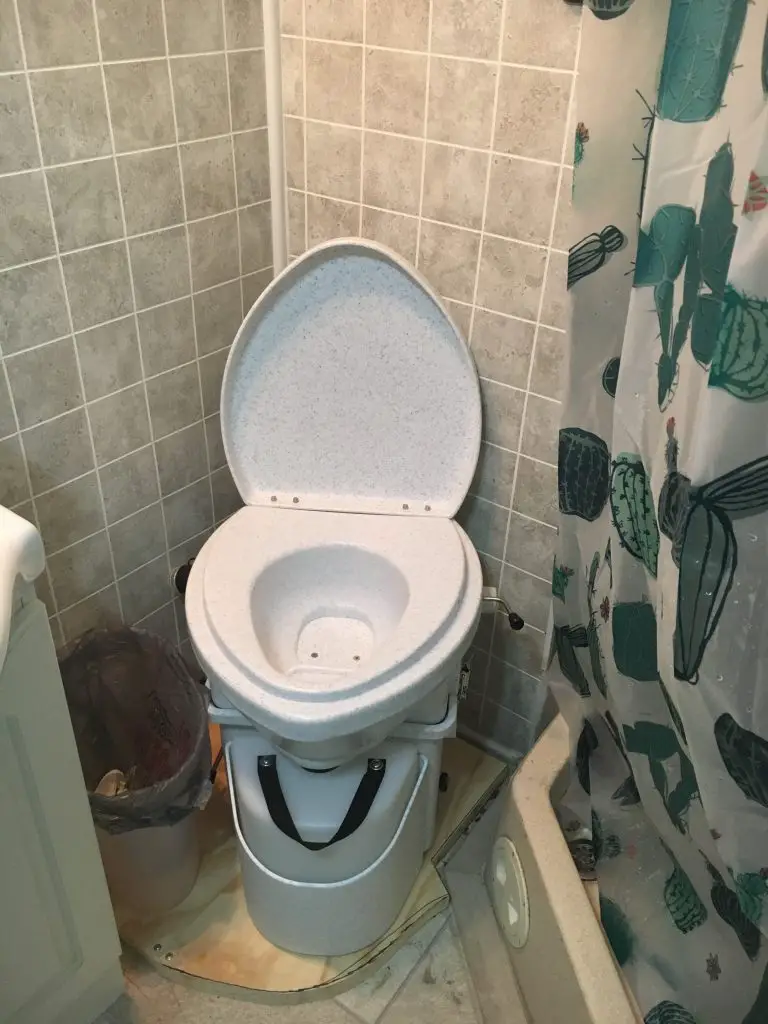
Nature’s Head composting toilet is probably the most popular composting toilet for RVers, van lifers, and people with tiny homes.
This is one of the leading composting toilets on the market today. It separates liquids and solids and is a really easy install.
Editor’s Note: We used Nature’s Head for 3+ years in both our RV and camper van. We also have a friend who used it in their tiny home – these toilets are incredibly popular! After the learning curve, we found it pretty easy to use. The only downsides were the bulkiness of the toilet and the fact that you have to lift the entire top off to remove the liquid jug.
OGO Composting Toilet

The OGO composting toilet is a newer brand on the scene, but it’s a really great one! This composting toilet is awesome for all RVs, but smaller RVs and camper vans in particular. The square shape allows it to tuck easily into a corner to save as much space as possible.
Unlike Nature’s Head, the compost agitator on this toilet is electric. Not only is that convenient – it saves space! With Nature’s Head, you have to allow room on the side for operating the handle.
If you are short on space or just want something sleeker than Nature’s Head, go with the OGO!
Air Head
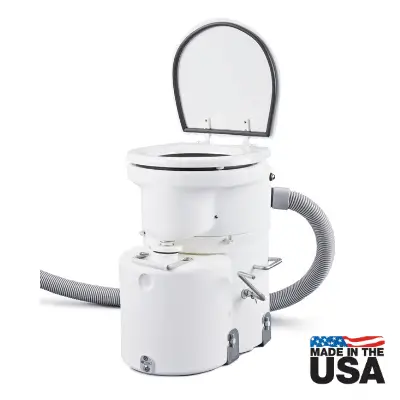
The Air Head composting toilet is one of the top competitors to Nature’s Head. This toilet is a bit different in a few ways. First, it has a standard toilet seat that feels more residential. Second, you don’t need to lift the entire top of the toilet to pull the liquid jug out.
It’s a bit more expensive than Nature’s Head and it’s not talked about as often, but we think it’s a pretty great choice too.
Separett RV Composting Toilet
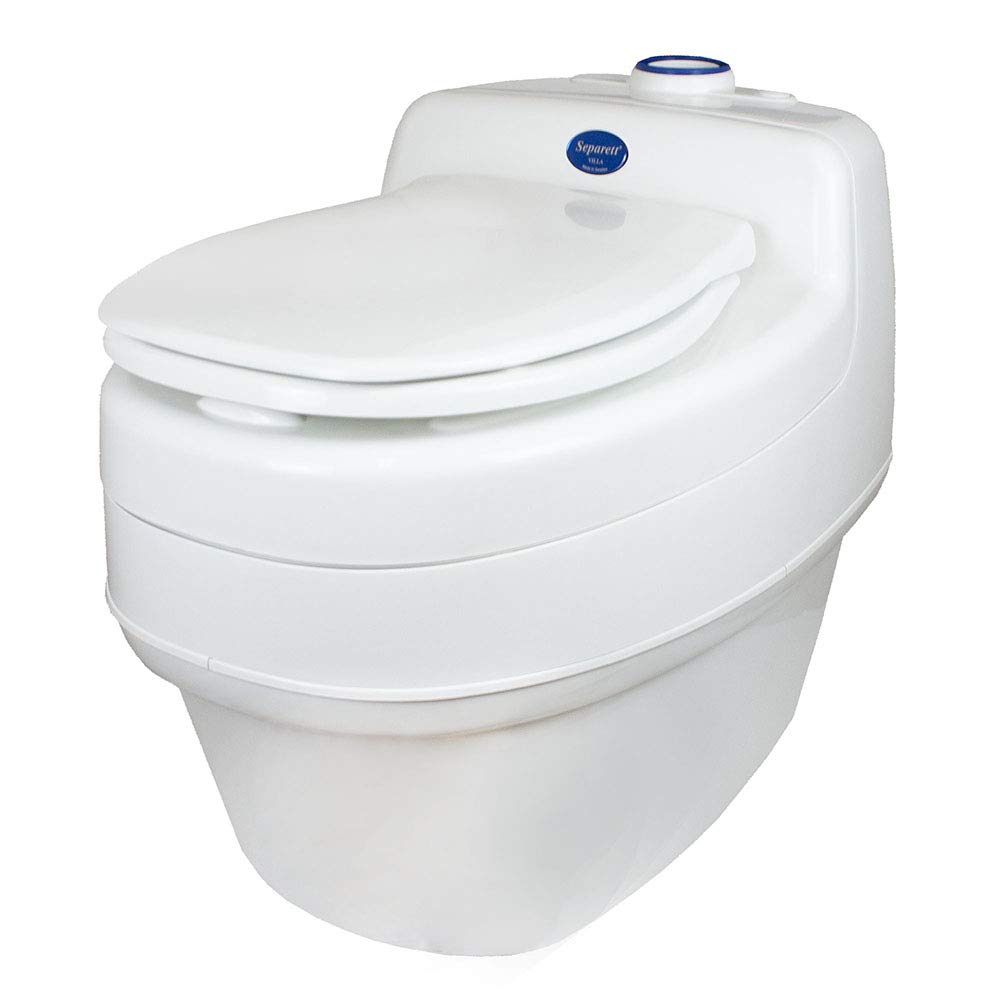
The Separett Villa composting toilet is a bit less expensive than the aforementioned brands of composting toilets. This toilet is a pretty good option, but it has a couple of drawbacks for RVers. First, it’s pretty bulky. Second, the vent pipe is a literal pipe on the back of the toilet.
This toilet is still a great option for RVers, especially those who want to spend a little less money. However, it is bulkier than other options.
Sun-Mar Composting Toilet
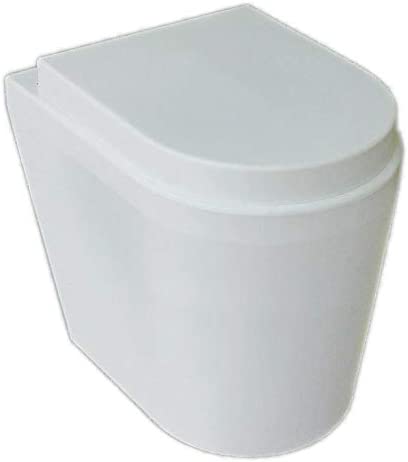
The Sun-Mar GTG toilet is cleverly named and cleverly designed. This is a compact portable composting toilet for RVs and it’s currently the smallest on the market today.
This toilet is efficient and has a sleek design – it’ll look good in any RV or van bathroom. And it’s super easy to install, too!
Bonus: it’s also the lowest-priced composting toilet on this list.
FAQs:
Can You Put a Composting Toilet in Any RV?
Yes! You can put a composting toilet in any RV, camper van, or anywhere that you want a toilet. That’s one of the major benefits of a composting toilet – you don’t need any kind of RV plumbing system. This makes them a really popular choice for campers that don’t have bathrooms.
How Often Do RV Composting Toilets Need to Be Emptied?
Composting toilets need to be emptied every 2-4 weeks depending on use and frequency. The liquids container will fill up faster, around every 2-3 days with two people using it. The solids do not need to be emptied nearly as often!
How Do You Empty a Composting Toilet and Where Do You Put The Waste?
There are two compartments on a composting toilet that need to be emptied: the liquids jug and the solids compartment.
The liquids jug is a 1 to 2 gallon jug that holds only urine. This jug will need to be emptied every 2-3 days. You can dump this jug into a campground dump station, into a campground toilet or vault toilet, and more. In some locations, it’s perfectly legal and acceptable to spread the liquid around mature vegetation.
In emergencies, you can even dump it down your RV shower drain into your gray tank.
To empty the solids – aka compost – you can use a regular garbage bag and dispose of it in a trash container or dumpster. It’s much like emptying a litter box!
Do Composting Toilets Smell Bad?
No. Composting toilets do not have the typical sewage odor associated with RV black tanks. The compost compartment does have a smell, but it’s not a bad one. It smells like damp soil. The liquids jug does have a smell of urine, but you typically never smell it unless you are dumping the liquid.
RV Composting Toilet vs Black Tank
The main difference between the RV composting toilet vs black tank and standard toilet is that the composting toilet is self-contained and uses no water. Thus, it doesn’t create sewage and you can empty it in many places. The RV black tank holds raw sewage and can only be dumped in an approved sewage dump station.
Is It Hard to Install a Composting Toilet in an RV?
No, it is not hard to install a composting toilet in an RV. The hardest part about the entire installation is venting the toilet to the outside. And, in some cases, running 12v power to the bathroom for the toilet vent fan. Other than that, the installation is as simple as removing the old toilet, placing your brackets on the floor, and putting your new toilet on the brackets!
Can You Put Toilet Paper in a Composting Toilet?
Yes, you can put toilet paper in a composting toilet, but it’s better if you don’t. Toilet paper takes up a lot of space and you will have to empty the toilet much more frequently if you put the toilet paper inside. Instead, most RVers use a small trash can for toilet paper.

